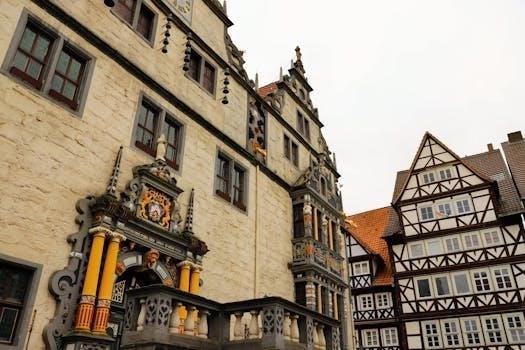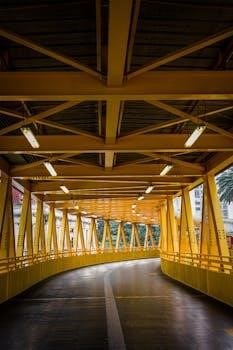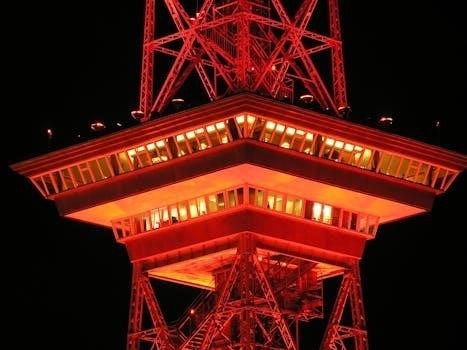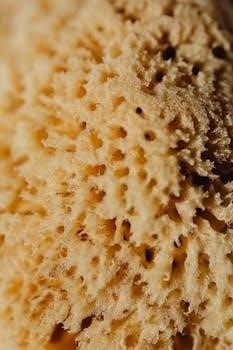Carbon fiber truss structures represent a significant advancement in structural engineering, offering a unique combination of strength and lightness. These structures utilize carbon fiber, known for its exceptional properties, arranged in a truss configuration to efficiently handle loads. This innovative approach finds application in diverse fields.
What is a Truss Structure?
A truss structure is fundamentally an assembly of interconnected elements, typically arranged in a triangular pattern, designed to distribute loads efficiently. These elements, often slender members, are connected at joints, forming a rigid framework. The primary function of a truss is to transfer forces, such as tension and compression, along its members, minimizing bending moments and shear stresses. In essence, the truss converts complex loads into simpler, axial forces within its components. The triangular geometry of truss structures is crucial for their stability, as it provides inherent rigidity, preventing collapse under load. This design principle allows for the construction of lightweight yet robust structures, making trusses a popular choice in various applications where load-bearing capacity and material efficiency are paramount. Trusses are commonly employed in bridges, roofs, and other structures where long spans and high strength-to-weight ratios are needed. The interconnectedness of truss members ensures that loads are distributed throughout the structure, preventing localized stress concentrations and promoting structural integrity. Understanding the basic principles of truss behavior is essential for comprehending how carbon fiber can be effectively integrated into these designs.
Why Use Carbon Fiber?
Carbon fiber is increasingly favored in structural applications, particularly in truss designs, due to its remarkable material properties. Its high strength-to-weight ratio is a key advantage, allowing for the creation of lighter structures without sacrificing load-bearing capacity. This is especially crucial in aerospace and civil engineering, where reducing weight can lead to significant energy savings and improved performance. Furthermore, carbon fiber exhibits exceptional stiffness, providing excellent resistance to deformation under load, which is essential for maintaining structural integrity. Another compelling reason to use carbon fiber is its resistance to corrosion and fatigue, enhancing the longevity and durability of structures in harsh environments. Unlike traditional materials like steel or aluminum, carbon fiber is not prone to rust or degradation from exposure to moisture and chemicals. The ability to tailor the properties of carbon fiber composites by adjusting fiber orientation and resin matrix also provides designers with greater flexibility to optimize structural performance. This customization allows for the creation of structures with specific characteristics to meet diverse requirements. Finally, the lightweight nature of carbon fiber facilitates easier installation and reduced transportation costs, making it an economically viable option for numerous structural applications. Therefore, its unique attributes make carbon fiber a superior choice for high-performance truss structures.

Design Considerations for Carbon Fiber Trusses
Designing carbon fiber trusses requires a meticulous approach, considering various factors for optimal performance. Load analysis, material properties, and joint design are crucial aspects. Understanding these design considerations ensures the structural integrity and efficiency of the final product.
Load Analysis and Structural Behavior
Understanding load analysis and structural behavior is paramount when designing carbon fiber trusses. This involves determining all potential forces the structure might encounter, including static loads like self-weight and dynamic loads such as wind or seismic activity. These forces dictate the stress distribution within the truss, highlighting areas requiring reinforcement or specific design considerations. The structural behavior of a carbon fiber truss is markedly different from traditional materials due to its high strength-to-weight ratio and anisotropic properties. This means the material’s strength varies depending on the direction of applied force. Consequently, finite element analysis (FEA) is crucial in predicting how the truss will respond to different load scenarios. This helps identify potential weak points and ensure the design can withstand the intended operational conditions. Proper load analysis and accurate structural modeling are essential for creating a safe, reliable, and efficient carbon fiber truss structure. Failure to accurately predict structural behavior can lead to unexpected failure or suboptimal performance. Therefore, a thorough analysis is not just recommended, but absolutely necessary for successful implementation. The process includes calculating bending moments, shear forces, and axial loads, which are all crucial for designing robust truss connections and members.

Material Properties of Carbon Fiber
Carbon fiber’s unique material properties are central to its effectiveness in truss structures. Its defining characteristic is its exceptional strength-to-weight ratio, allowing for lightweight yet robust designs. Unlike traditional materials, carbon fiber is anisotropic, meaning its mechanical properties differ depending on the direction of applied force. This necessitates careful consideration of fiber orientation in the truss design. Another key property is carbon fiber’s high stiffness, which means it deforms less under load compared to materials like steel or aluminum. This is important in applications requiring minimal deflection. However, it’s crucial to note that carbon fiber is brittle and has limited ductility, meaning it does not deform much before fracturing. Consequently, designs must avoid stress concentrations and prevent sudden impacts that could lead to catastrophic failure. The material’s resistance to corrosion and fatigue also contributes to the longevity of carbon fiber trusses in harsh environments. These properties combine to make carbon fiber a superior choice when weight and performance are critical factors, but require careful engineering to manage its specific characteristics. Understanding these nuances is crucial for successful implementation in any application.
Joint Design and Connection Methods
Effective joint design and connection methods are critical for the structural integrity of carbon fiber trusses. Unlike traditional materials where welding or bolting are common practices, joining carbon fiber requires specialized techniques. Bonding is frequently employed, using adhesives to create strong, continuous connections. This method distributes stress evenly across the joint, minimizing stress concentrations. However, proper surface preparation and adhesive selection are paramount for a durable bond. Mechanical fasteners, such as rivets or bolts, can also be used, but they require careful design to avoid damaging the carbon fibers. Hybrid methods, combining bonding with mechanical fasteners, offer a balanced approach, leveraging the benefits of both. The design of joints must consider the anisotropic nature of carbon fiber, ensuring the connections can withstand the directional forces. For complex truss configurations, the connections become more complicated, necessitating precise engineering. The geometry of the joint also plays a significant role in load distribution. The goal is to create connections that are as strong as the carbon fiber members themselves, ensuring the overall structural performance of the truss. Ultimately, effective joint design is essential for realizing the full potential of carbon fiber in structural applications.

Applications of Carbon Fiber Trusses
Carbon fiber trusses are utilized in diverse applications due to their high strength-to-weight ratio. These range from aerospace components and wind turbine blades, to civil engineering projects. Their unique characteristics make them ideal for demanding structural roles.
Aerospace Structures
In aerospace, carbon fiber trusses are pivotal due to their exceptional strength-to-weight ratio, a critical factor in aircraft and spacecraft design. These structures enable the creation of lighter yet robust components, leading to improved fuel efficiency and payload capacity. Applications range from satellite structures, where precision and minimal weight are paramount, to airframe components, which need to withstand substantial aerodynamic forces. The use of carbon fiber in space also addresses challenges posed by temperature variations and the harsh environment. Furthermore, the design of large-size antenna reflectors often relies on carbon fiber composites, achieving high precision and structural integrity. Moreover, the study of spatial truss structures in aerospace is essential for creating large supporting structures to place scientific equipment and instrumentation. The ability of these trusses to form rigid and stable frameworks while maintaining a lightweight profile makes them ideal for various aerospace applications, including those involving deployable structures and space station elements. They provide the necessary structural support while minimizing mass, which is a significant concern for any airborne or space-bound vehicle. The material’s adaptability also allows for the creation of complex geometries, further enhancing design possibilities and performance.
Wind Turbine Blades

Carbon fiber truss structures are increasingly vital in the construction of modern wind turbine blades, where the need for lightweight and high-strength materials is paramount. The core of these blades often incorporates a truss structure, typically composed of carbon fiber rods connected to stiff ribs. This design approach enables the creation of lighter blades that can withstand the significant forces generated by wind, thereby improving the overall efficiency and performance of the turbine. The use of carbon fiber allows for the construction of longer blades, which in turn capture more wind energy. This enhances power generation and reduces the cost of electricity production. Additionally, the structural integrity of the blades is improved, making them more durable and resistant to fatigue. Carbon fiber’s ability to withstand harsh weather conditions, including high winds and varying temperatures, contributes to the reliability of wind turbines. The design of these truss structures must also take into account the complex aerodynamic forces acting on the blade, ensuring that it can efficiently convert wind energy into rotational motion. The core truss structure provides structural rigidity and reduces deformation, which is crucial for maintaining the blade’s optimal shape and performance. This makes carbon fiber truss structures an essential component in the ongoing development and improvement of wind turbine technology.
Civil Engineering and Bridge Applications
The application of carbon fiber truss structures in civil engineering, particularly in bridge construction, offers numerous advantages over traditional materials like steel and concrete. The lightweight nature of carbon fiber reduces the overall weight of the structure, leading to reduced foundation requirements and easier installation. This is particularly beneficial in challenging construction environments where heavy lifting equipment might be difficult to operate. Carbon fiber’s high strength-to-weight ratio allows for the design of longer spans with fewer supports, creating more open and aesthetically pleasing bridges. Furthermore, carbon fiber is highly resistant to corrosion, which significantly reduces maintenance costs and extends the lifespan of the structure. This is especially important in coastal or industrial areas where bridges are exposed to harsh conditions. The use of carbon fiber in bridge construction also facilitates the rapid deployment of modular bridge components, speeding up the construction process and minimizing disruptions. The versatility of carbon fiber allows for the creation of innovative bridge designs that are both functional and visually appealing. The reduced material consumption and lower carbon footprint associated with carbon fiber make it a more sustainable option for infrastructure projects. The application of carbon fiber truss structures in civil engineering projects is still relatively new, but the potential benefits are significant, and it is expected to become a more common practice in the future.
